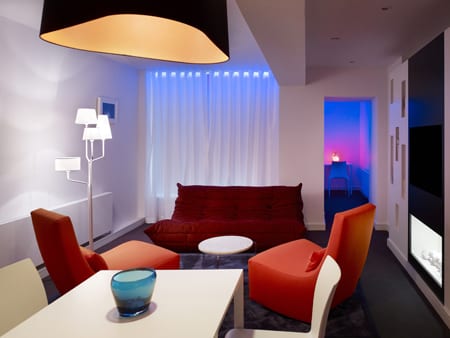 Courtesy of our friends at GS Magazine in London
Courtesy of our friends at GS Magazine in London
A recent visit to the newly refurbished Lennoxlove House, 20 miles east of Edinburgh, has confirmed two things: firstly, we southerners could learn a thing or two about Scottish hospitality and, secondly, given its history, the local Scots should be anything but welcoming.
The House was first built in the 14th century and the oldest remaining part of it is the tower, which was constructed as a defense against the marauding English armies. It touches on many of the defining events in Scotland’s history, most of which were opposing English, from the plight of Mary Queen of Scots—her death mask is on show at the House—to a secret mission by Rudolf Hess to Scotland during the World War II.
 It has been a fortified tower, military headquarters, country retreat, dower house, and family home and symbolizes the changing history of Scotland over the centuries.
It has been a fortified tower, military headquarters, country retreat, dower house, and family home and symbolizes the changing history of Scotland over the centuries.
The portraits, archives, furnishings, china, and memorabilia preserved within its walls, as part of the prestigious Hamilton Collection, provide a unique record of three families who played a vitally important role in the nation’s political and cultural past: the Maitlands, the Blantyres, and the Dukes of Hamilton. Its rich and complex history has been at the core of Lennoxlove’s renovation and redevelopment. For 18 months and under the guidance of conservation architect Alison Smith and Historic Scotland, Lennoxlove House’s historic significance has governed decisions about repairs, adaptations, and improvements in order to provide it with a viable future.
The work involved the treatment of dry rot in the tower, which caused ceilings to collapse, the replacement of floors, re-pointing walls, and securing the building from wind and rain. Using local craftsmen wherever possible, historic features such as the stonework have been restored, including the addition of four new gargoyles to replace those scarred by the vagaries of the weather.
 With work complete, Lennoxlove enters a new chapter in its life as luxury accommodation for private hire. The House offers 11 huge bedrooms, three specific conference and meeting rooms, private dining for up to 24 in the magnificent Great Hall, and banqueting for 84. There is a chapel and weddings can take place there so the place is perfect for weekend wedding parties. In addition, outdoor activities including clay pigeon shooting, archery, falconry, and off-road driving can be organized in the 460-acre estate.
With work complete, Lennoxlove enters a new chapter in its life as luxury accommodation for private hire. The House offers 11 huge bedrooms, three specific conference and meeting rooms, private dining for up to 24 in the magnificent Great Hall, and banqueting for 84. There is a chapel and weddings can take place there so the place is perfect for weekend wedding parties. In addition, outdoor activities including clay pigeon shooting, archery, falconry, and off-road driving can be organized in the 460-acre estate.
As Lennoxlove House is first and foremost a family home, where family photos adorn the tabletops, and mantelpieces and family heirlooms decorate every room. Guests have no sense of hotel living, more of staying in a home away from home. And despite the fact that the House is almost a living museum, full of near priceless art and artifacts, it is informal and relaxing, like a good home should be. It’s where one can admire a piano once played by Chopin or help oneself to a light snack from the butler’s pantry, inspect a sixteenth century silver casket in one room, and still relax on the sofa in the next.
 A small close-knit team of staff are on hand for guests, but they are not like traditional hotel staff. They are there to serve meals and clean the rooms and ensure that guest stays run smoothly, but they are also there to tell stories about the House and organize chauffeur driven excursions to help guests enjoy the full experience of Lennoxlove; the House has close links with private jet and helicopter companies (it has its own helicopter landing pad) and with some of East Lothian’s most exclusive golf courses, such as Renaissance, which ranks as one of Scotland’s finest.
A small close-knit team of staff are on hand for guests, but they are not like traditional hotel staff. They are there to serve meals and clean the rooms and ensure that guest stays run smoothly, but they are also there to tell stories about the House and organize chauffeur driven excursions to help guests enjoy the full experience of Lennoxlove; the House has close links with private jet and helicopter companies (it has its own helicopter landing pad) and with some of East Lothian’s most exclusive golf courses, such as Renaissance, which ranks as one of Scotland’s finest.


